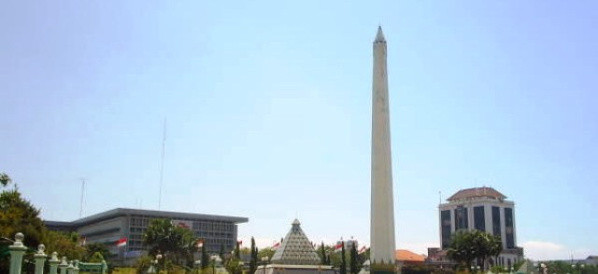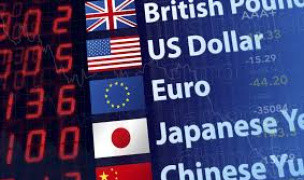 19 Terms
19 TermsHome > Terms > English (EN) > gay and lesbian life and politics
gay and lesbian life and politics
After the 1969 Stonewall riots, the call for an active gay and lesbian political agenda became paramount. Through often spirited activism and persistent grassroots politics, a gay and lesbian movement cavalierly came into being. As this coalition gained momentum, important social changes occurred not only at state level, but in areas such as psychology, education, religion and media representation. At its best, the gay and lesbian movement has forged a powerful visibility in the political arena. At its worst and most banal, the movement has served to create a new demographic for commercial advertising. In any case, these changes were not always agreed upon by either the popular heterosexual culture or gay and lesbian activists themselves.
As the gay and lesbian movement quickly learned, the constituency of any radical movement is unequivocally diverse. The difficulty inherent to any coalition-building is the sometimes obstreperous struggle to proactively engage these differences for a unified cause. What became apparent to many post-Stonewall gay and lesbian activists was that the “lifestyle” did not simply occupy a univocal position. While there was much political agreement that “liberation” was a good and important thing to have, the very definition of liberation took on multiple and complex meanings.
At the outset, the very terms used to describe the movement began to fragment. Was a drag queen a gay man? Did the S&M leather dyke share the same political desire as the lesbian who thrived on a life in the country? Should bisexuals be included in the gay and lesbian political caucus? Can there be such a thing as a gay Republican? Where does the transgender (pre-operative, post-operative, non-operative) fit into the “gay and lesbian” schema? How “out” is out? Does one only tell one’s friends? family? co-workers? fellow students? Needless to say there has been much contention within the movement. It is no wonder that as diversity superseded the original intention of gay and lesbian organizations the question was asked: how can a gay and lesbian movement continually expand its cultural base in order to encapsulate the vicissitudes of sexual identity? Sensitivity to difference among many gays and lesbians has led to an ever-evolving nomenclature that takes into consideration the variance of social categories. One need only peruse, for example, the pages of the Gayellow Pages whose objective in 1973 was to “(inform) the lesbian, gay and bisexual community.” In 1998 the new sexual identities that struggle for cultural position were laundry-listed on the front page of the phone book.
Inclusion serves in the marketing of difference. Hence, the Gayellow Pages now informs a consumer that is referred to as the “gay, lesbian, bisexual, and transgender community” There will, of course, be additions.
Indeed, gay and lesbian (bisexual, transgender, etc.) life is besotted with consumer goods that purportedly support our irreducible needs, wants and pleasures. Books, movies, television programs, clothing manufacturers, furniture stores, realtors, restaurants and other traditional commercial establishments rigorously vie for gay and lesbian customers. Even non-traditional commercial venues such as sex-toy shops, leather bars and sex clubs, and their exotic wares, have strategized effective advertising campaigns that appeal to their niche audiences.
Political organizations such as the Gay and Lesbian Alliance Against Defamation (GLAAD) and the National Gay and Lesbian Task Force (NGLTF) have kept their names, but have over the years changed their mission statements to embrace and include transgender people, as well as other progressive sexual and non-sexual movements. The pendular side of these politics is the Washingtonbased lobbyists such as the Human Rights Campaign (HRC) and the Republican Log Cabins who seek to diversify gay and lesbian initiatives through beltway politics. While HRC seeks to negotiate the political terrain of both the Democratic Party and the Republican Party, the Log Cabins ideologically place all their stock in the Republican agenda. Most recently both groups have been accused of conservative initiatives that are perceived as being out of political step with many gays, lesbians and transgenders.
Marriage, AIDS, homophobia, public sex, abortion and racism continue to be (as the movement itself) some of the highly debatable issues that homosexuals wrangle over.
The stakes are certainly high in the ongoing adjustments of the political landscape. The dynamics of power in the now historical movement rapidly shift between gay white stock brokers and radical activists. What is striking, however, is also the rapidity with which these glaring differences can and do unify Whether it has been at an AIDS demonstration or a memorial march for Matthew Shepard (a twentyone-year-old Wyoming student who was a victim of deadly homophobia in 1998), gays, lesbians, transgenders, queers, dykes on bikes, stockbrokers, students, poets, painters, theorists, historians and clerics have rallied together to flag the insidiousness of heterosexism and homophobia.
In the twenty-first century the arguments over difference in what was once known as the “gay and lesbian movement” will undoubtedly continue. In fact, the debate will probably become more contentious as more people identify themselves as not heterosexual. Not only are there more voices added to the cacophony of sexual politics, but the geographical dispersion of this population is growing larger. While the urban gay “ghetto” of the Stonewall era has clearly thrived, many homosexuals have chosen to find permanent dwellings on rural farms, in small towns and in the suburbs. The political and cultural implications of these population shifts remain to be seen. Add to these demographic changes the “gay and lesbian” workers who constitute an economy of many different ethnicities, moralities and financial strata, and one will find that the sexuality of everyday life in America is certain to trigger a politically raucous twenty-first century.
- Part of Speech: noun
- Synonym(s):
- Blossary:
- Industry/Domain: Culture
- Category: American culture
- Company: Routledge
- Product:
- Acronym-Abbreviation:
Other Languages:
Member comments
Terms in the News
Billy Morgan
Sports; Snowboarding
The British snowboarder Billy Morgan has landed the sport’s first ever 1800 quadruple cork. The rider, who represented Great Britain in the 2014 Winter Olympics in Sochi, was in Livigno, Italy, when he achieved the man-oeuvre. It involves flipping four times, while body also spins with five complete rotations on a sideways or downward-facing axis. The trick ...
Marzieh Afkham
Broadcasting & receiving; News
Marzieh Afkham, who is the country’s first foreign ministry spokeswoman, will head a mission in east Asia, the state news agency reported. It is not clear to which country she will be posted as her appointment has yet to be announced officially. Afkham will only be the second female ambassador Iran has had. Under the last shah’s rule, Mehrangiz Dolatshahi, a ...
Weekly Packet
Language; Online services; Slang; Internet
Weekly Packet or "Paquete Semanal" as it is known in Cuba is a term used by Cubans to describe the information that is gathered from the internet outside of Cuba and saved onto hard drives to be transported into Cuba itself. Weekly Packets are then sold to Cuban's without internet access, allowing them to obtain information just days - and sometimes hours - after it ...
Asian Infrastructure Investment Bank (AIIB)
Banking; Investment banking
The Asian Infrastructure Investment Bank (AIIB) is an international financial institution established to address the need in Asia for infrastructure development. According to the Asian Development Bank, Asia needs $800 billion each year for roads, ports, power plants or other infrastructure projects before 2020. Originally proposed by China in 2013, a signing ...
Spartan
Online services; Internet
Spartan is the codename given to the new Microsoft Windows 10 browser that will replace Microsoft Windows Internet Explorer. The new browser will be built from the ground up and disregard any code from the IE platform. It has a new rendering engine that is built to be compatible with how the web is written today. The name Spartan is named after the ...
Featured Terms
Heroes Monument
Heroic Monument, also known as Heroes Monument is a monument in Surabaya, Indonesia. It is the main symbol of the city, dedicated to the people who ...
Contributor
Featured blossaries
Browers Terms By Category
- Dictionaries(81869)
- Encyclopedias(14625)
- Slang(5701)
- Idioms(2187)
- General language(831)
- Linguistics(739)
Language(108024) Terms
- Architecture(556)
- Interior design(194)
- Graphic design(194)
- Landscape design(94)
- Industrial design(20)
- Application design(17)
Design(1075) Terms
- Project management(431)
- Mergers & acquisitions(316)
- Human resources(287)
- Relocation(217)
- Marketing(207)
- Event planning(177)
Business services(2022) Terms
- Muscular(158)
- Brain(145)
- Human body(144)
- Developmental anatomy(72)
- Nervous system(57)
- Arteries(53)
Anatomy(873) Terms
- Ballroom(285)
- Belly dance(108)
- Cheerleading(101)
- Choreography(79)
- Historical dance(53)
- African-American(50)




